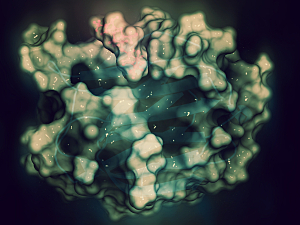Co-infections with taxonomically diverse sexually transmitted pathogens are common but their interactions with each other and the host are poorly understood. The condition of disturbed vaginal bacteriome, known as bacterial vaginosis (BV), affects more than one third of reproductive age women around the glove, and its frequent companion is the protozoan parasite Trichomonas vaginalis (TV). This mixed infection is associated with a greater risk of HIV infection and transmission, greater risk of human papillomavirus (HPV) infection, and lower clearance of HPV. The parasite brings to the protozoan-bacterial-viral interactome its own microbiome, in particular, viruses (TVV) uniquely adapted to its protozoan host, and shown by to be immunogenic.
Raina N. Fichorova, MD, PhD, director of the Laboratory of Genital Tract Biology in the Department of Obstetrics and Gynecology at Brigham and Women’s Hospital, Hidemi S. Yamamoto, BA, manager of the lab, and colleagues have discovered concurrent exposure to TV and BV dysregulates the expression of galectins—proteins that ordinarily form part of innate immune defenses. In Frontiers in Cellular and Infection Microbiology, the researchers are also the first to report that TVV helps TV and bacteria evade the human immune system.
Methods
The study utilized biospecimens from the HIV Epidemiology Research Study (HERS), which prospectively followed 871 HIV-infected women and 439 high-risk HIV-uninfected women of reproductive age in four U.S. cities. Over the course of up to seven years, women had semiannual examinations that included cervicovaginal lavage and vaginal swabs.
The researchers conducted a nested case–control study, defining cases as HERS participants who had TV documented after a TV-negative visit (“incident TV”). Women who remained negative for TV throughout the follow-up served as controls. 223 incident TV visits were randomly matched with a visit by a control participant by race, age, HIV status, Nugent score for BV, hormonal contraceptive use, and hysterectomy status.
Galectin-1 and Galectin-9
Galectin-1, galectin-9, interleukin (IL)-1β, and all chemokines studied were higher in women with incident TV than in controls. Higher galectin-1 and galectin-9 levels showed strong positive correlations with markers of cervicovaginal inflammation, including IL-1β, IL-8, MIP-1β, and RANTES.
In TV-infected women, galactin-9 was higher with vaginal dysbiosis/BV and HIV infection, and both higher galectin-1 and -9 were associated with the presence of monocytes in the mucosal secretions (P<0.001), which is an additional risk factor for HIV acquisition and transmission.
Galectin-3
Galectin-3 was inversely associated with incident TV depending on bacterial and viral co-infection status:
- No BV (OR, 0.03)
- Co-infection with HIV (OR, 0.39)
- Co-infection with herpes simplex virus (OR, 0.22)
In TV-infected women, galectin-3 was lower in the presence of vaginal dysbiosis and BV (p<0.001).
Protozoan–Viral–Bacterial Synergisms
To prove causative relationships, the team investigated the effects of mixed infections in a human in-vitro model:
- TV synergized with TVV and BV bacteria to upregulate galectin-1, galectin-9, and inflammatory cytokines
- A BV-signature bacterium, Prevotella bivia, downregulated galectin-3 and acting synergistically with TV upregulated galectin-1, galectin-9, and IL-1β
- P. bivia also suppressed antiviral response (e.g., IP-10 and RANTES) induced by the TVV-harboring TV
Interpreting the Findings
These results suggest molecular mechanisms by which BV organisms, particularly P. bivia, drive susceptibility to persistent TV infection. By upregulating epithelial galectin-1 expression, P. bivia seems to exacerbate the amplified galectin-1 in natural TV–BV co-infection, thereby facilitating the parasite adherence to epithelial cells, which is mediated by this galectin.
Galactin-1 and -9 facilitate HIV entry into host cells, so increased levels of these proteins may be exploited by protozoan–bacterial synergisms with HIV. On the other hand, dampening of galactin-1 and -9 associated with the HPV-TV co-infections may facilitate viral persistence in these cases.
TV is an established risk factor for cervical cancer, and future research might show how galectins and suppression of innate immunity play a role in this risk.
